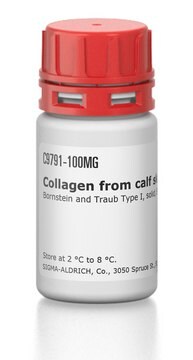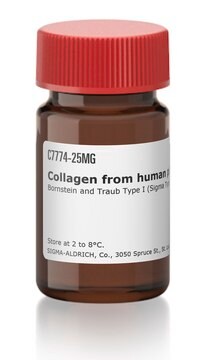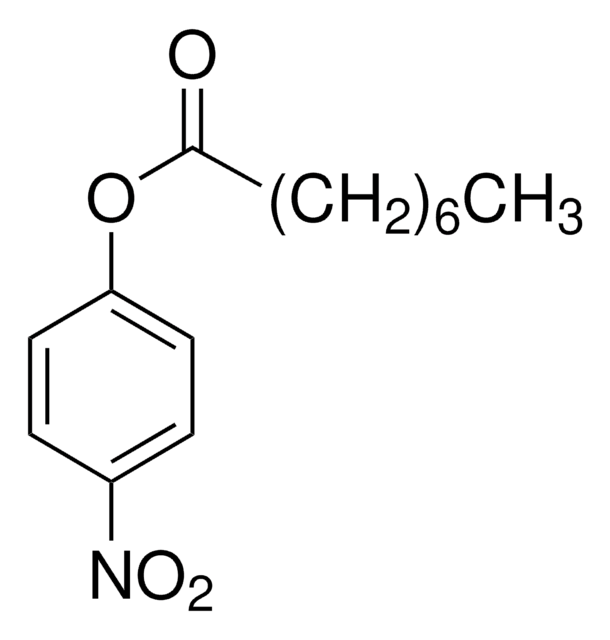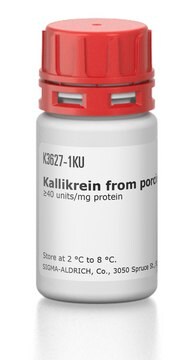K1632
Kininogen high molecular weight, Two Chain from human plasma
lyophilized powder
Sign Into View Organizational & Contract Pricing
All Photos(1)
About This Item
Recommended Products
biological source
human plasma
Quality Level
form
lyophilized powder
solubility
H2O: soluble 0.1 mg protein/mL
UniProt accession no.
storage temp.
−20°C
Gene Information
human ... KNG1(3827) , KNG1 (includes EG:3827)
General description
HK (KNG1) gene is mapped to human chromosome 3q27.3. It is a glycoprotein.
High-molecular-weight kininogen (HK) is the substrate and cofactor of the plasma kallikrein-kinin system (KKS). It is present at a concentration of 660 nM on the plasma and binds to platelet GPI-V-IX complex.
Biochem/physiol Actions
High-molecular-weight kininogen (HK) inhibits binding of thrombin to platelets.
High molecular weight kininogen, two chain, is a participant in contact phase activation of the intrinsic blood coagulation cascade that forms a substrate on which blood factor XI is held in proximity to factor XII allowing reciprocal activation of the two factors. It is also involved in the activation of prekallikrein. High molecular weight kininogen binds to proteoglycans on the surface of platelets, endothelial cells, and other cell types. Domain 5 of high molecular weight kininogen inhibits platelet aggregation and angiogenesis.
Packaging
Package size based on protein content
Physical form
Lyophilized from 4 mM sodium acetate, pH 5.3, 0.15 M NaCl
Preparation Note
Prepared by kallikrein digestion of human kininogen. Purified to remove kallikrein and kinin.
Storage Class Code
13 - Non Combustible Solids
WGK
WGK 1
Flash Point(F)
Not applicable
Flash Point(C)
Not applicable
Personal Protective Equipment
dust mask type N95 (US), Eyeshields, Gloves
Choose from one of the most recent versions:
Already Own This Product?
Find documentation for the products that you have recently purchased in the Document Library.
Henri Weidmann et al.
Biochimica et biophysica acta. Molecular cell research, 1864(11 Pt B), 2118-2127 (2017-07-27)
The contact system is a potent procoagulant and proinflammatory plasma protease cascade that is initiated by binding ("contact")-induced, auto-activation of factor XII zymogen. Formed active serine protease FXIIa then cleaves plasma prekallikrein to kallikrein that in turn liberates the mediator
[Omeprazole long-term therapy: how great is the risk of developing a carcinoid tumor?].
H Koop
Zeitschrift fur Gastroenterologie, 26(12), 769-771 (1988-12-01)
Rince John et al.
FEBS letters, 591(21), 3507-3522 (2017-09-28)
Cytoglobin (Cygb) is a cellular haemoprotein belonging to the globin family with ambiguous biological functions. Downregulation of Cygb in many cancers is indicative of its tumour-suppressive role. This is the first report showing the cell cycle regulation of Cygb, which
Our team of scientists has experience in all areas of research including Life Science, Material Science, Chemical Synthesis, Chromatography, Analytical and many others.
Contact Technical Service








